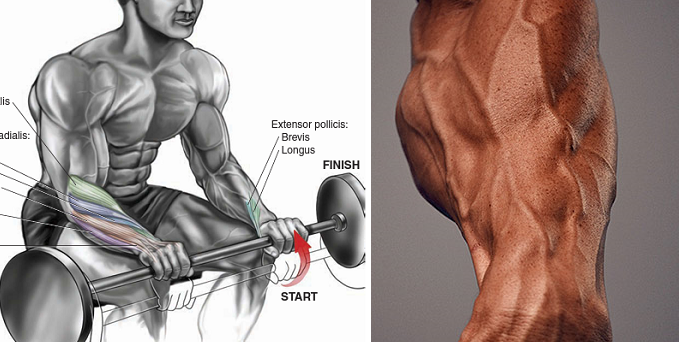Most people you see lifting weights in a gym will be focusing on the “beach muscles”. They work on their chest, shoulders, and triceps. These are all good because they form a large, wide look of the body that is rounded and packed with muscle. However, most people will over look the forearms.

Working the forearms has two distinct advantages. The first is that it strengthens the grip. Having a strong grip is paramount to being able to lift heavier weight to sculpt the rest of the body. Without a strong grip your shoulder and trap workouts could suffer because your hands and forearm muscles will not be adequate enough to grip the weight needed to build the others. The same goes for most upper-back exercises such as the lawn-mower pull. The second advantage is that building forearm muscle really does give the arm-and the entire upper body-a well balanced look. Small forearms just look silly on a guy that has huge biceps, triceps and delts.
Building forearm muscle is relatively easy and can be accomplished with two simple exercises; the wrist curl and the reverse wrist curl. The Wrist Curl is the first one we will talk about. It’s a good idea to perform wrist curls with dumbbells instead of a barbell so that you can work one wrist at a time. If you don’t feel comfortable working dumbbells however, feel free to use an EZ Curl Bar or a modified bench bar.
To perform this exercise, kneel down beside a regular bench with your forearms resting on it and the weight in your hands, palms up, which should about two inches beyond the bench. Start with a light dumbbell of 1 to 5 pounds until you know what you’re most comfortable with. Then simply raise your fist and the dumbbell upward. Lower it slowly to a point where there is no pain but ensure you are using full range of motion.
The reverse Wrist Curl is almost the same exact exercise as its counterpart, except that the hand is facing palm down and you are curling your knuckles upward. Many people find that is more difficult to perform the reverse wrist curl at first but in a few weeks the muscle will start build and balance out.
As with any new exercise routine building forearm muscle will cause your soreness for about the initial two weeks until the muscles adapt to the usage.
